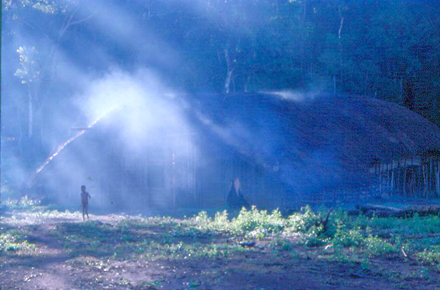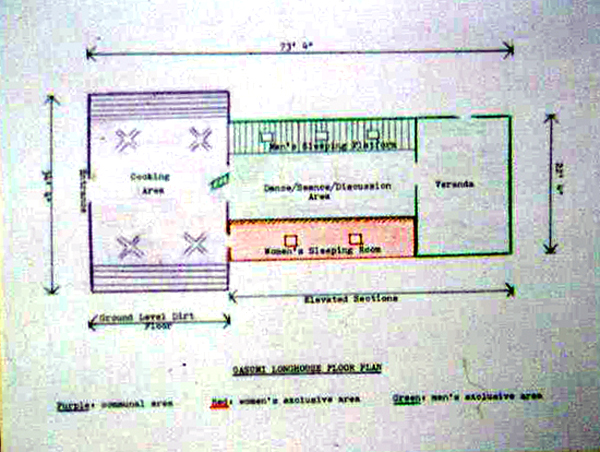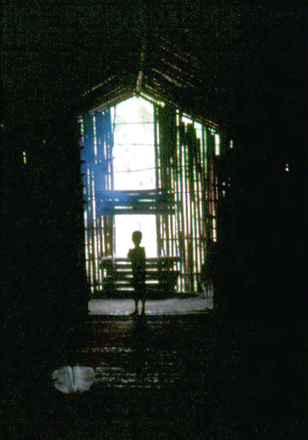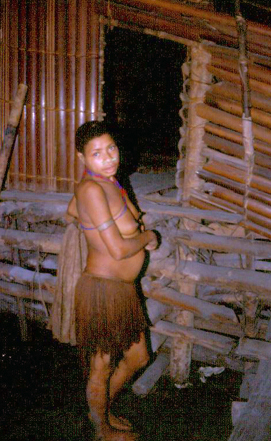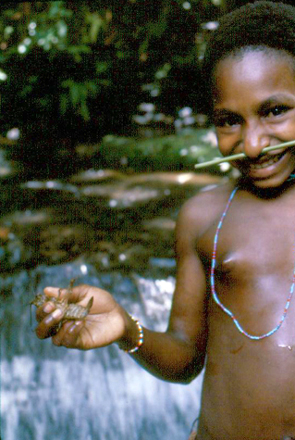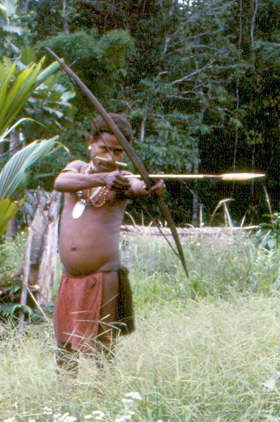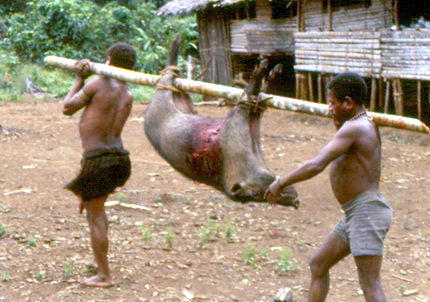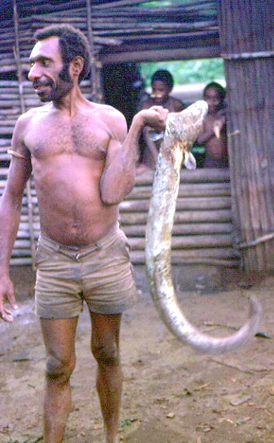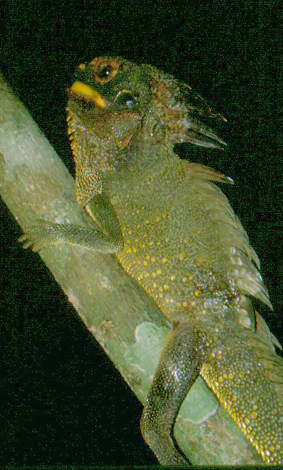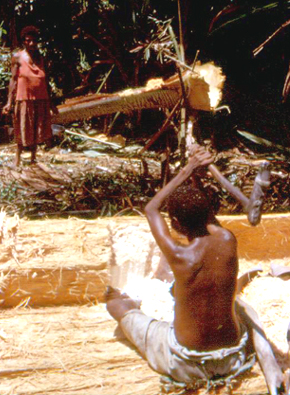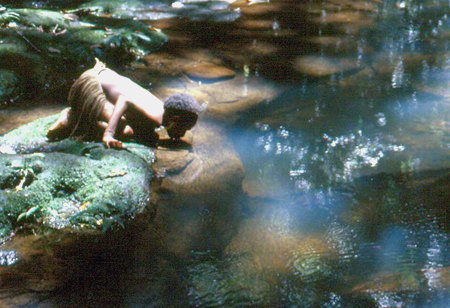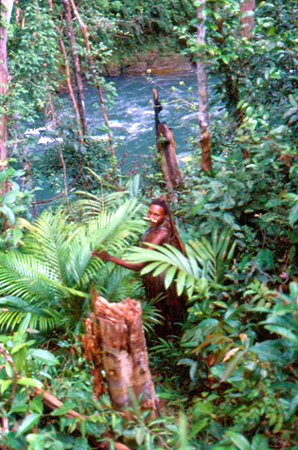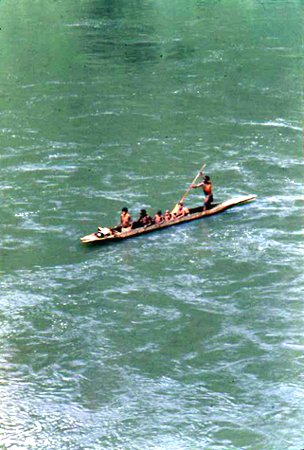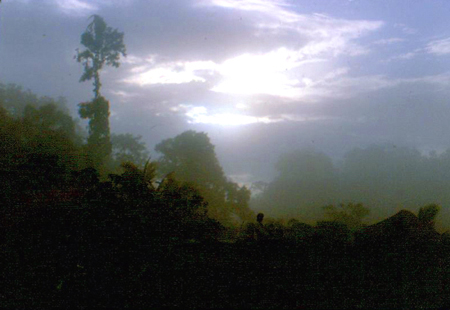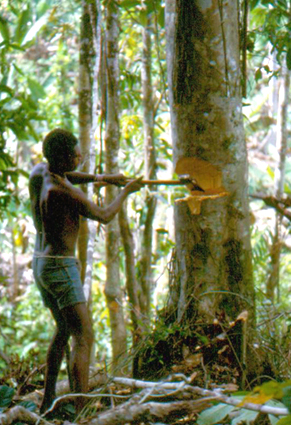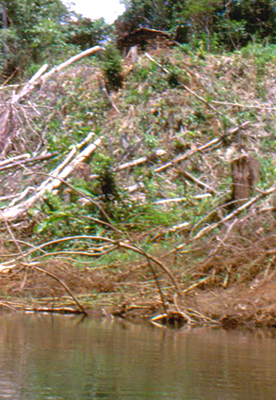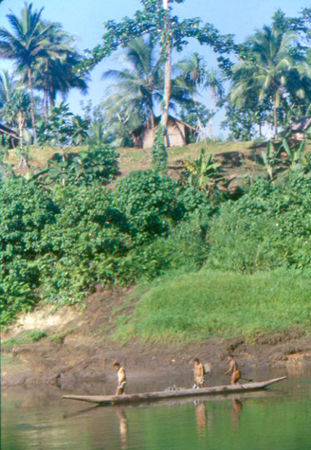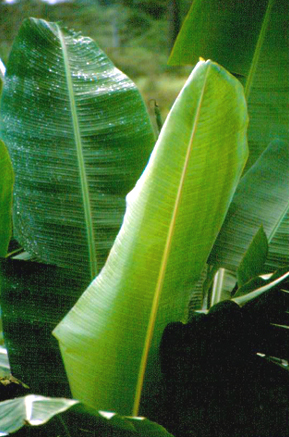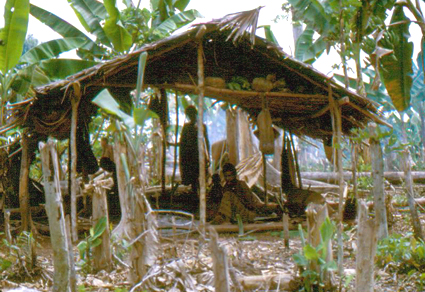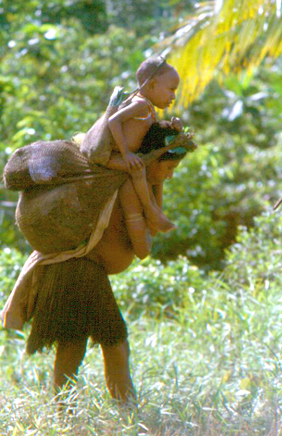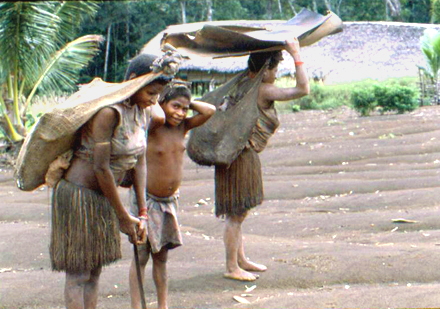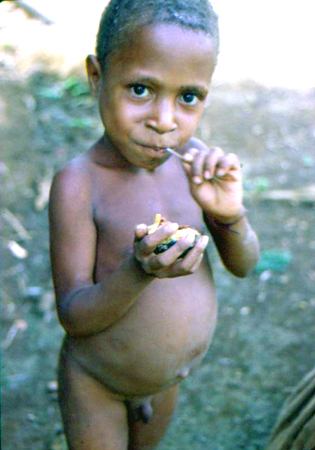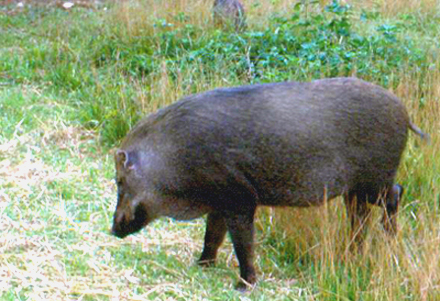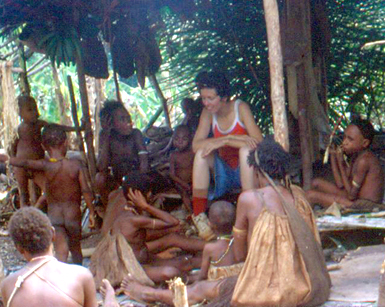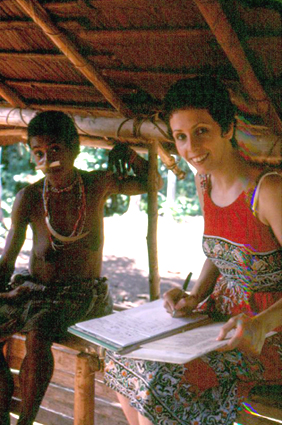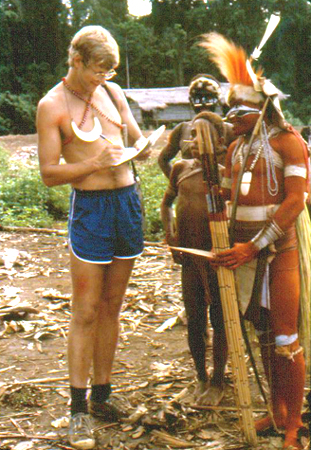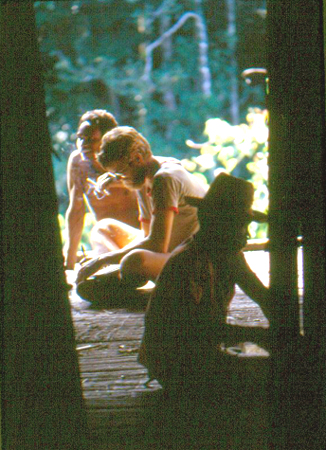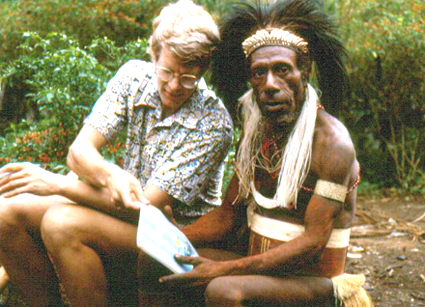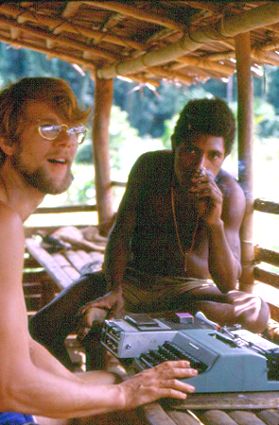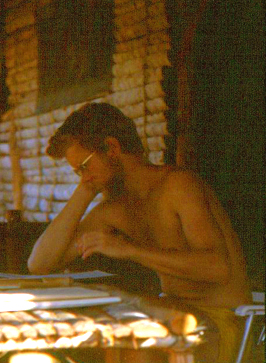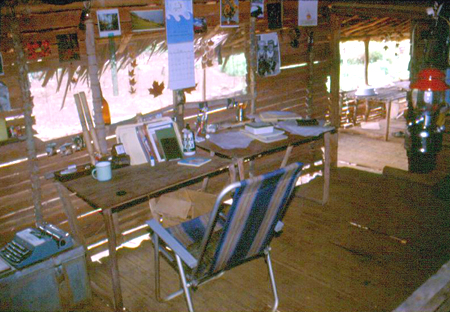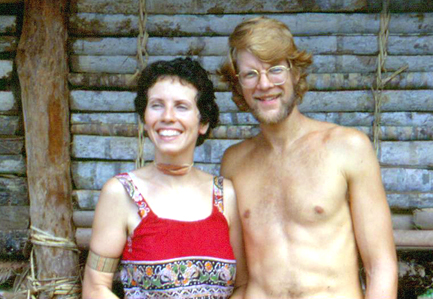1. The Gebusi longhouse at dawn, boy in the foreground. The smoke of cooking fires rising through the thatch meets the morning mist.
2. Gebusi longhouse in late afternoon. House dimensions = 34’ x 74′.
3. Longhouse floor plan, showing rooms and the areas of the house used by men and women. Families cook and eat communally in the “lower house,” but the rest of the dwelling is sex segregated. Men and women sleep separately – intimate relations between husbands and wives take place in the forest. The central corridor, men’s sleeping area, and large veranda of the house are the exclusive space of men. The women’s collective sleeping quarters, which are small and cramped, are normally the only part of the house used by women except for the cooking area. On special occasions such as ritual feasts, women are allowed to sit in the men’s sleeping area and sing.
4. Longhouse interior, looking towards the cooking area and front door from the raised sleeping area, with a young boy in silhouette.
5. A young married woman stands next to the small opening to the low and narrow women’s sleeping section, which lines one side of the longhouse.
6. Namwi shows off a fresh water prawn that she caught in the stream behind her.
7. A young man named Mata prepares to shoot a domesticated pig in the village clearing with his bow and arrow. Gebusi arrows are very long. This lessens the distance the arrow must travel when shot from short distances by a stealthy hunter camouflaged by foliage in the forest.
8. Two men carry a hunted pig into the village. (Bruce and Eileen’s house is in the background.)
9. A senior man, Imba, shows off one of the largest river fish he has ever caught.
10. A lizard on a tree branch in the forest. Gebusi eat almost anything that moves – and lizards are no exception.
11. A woman pounds pith from a stripped sago palm trunk with a stone adze. The white pith is then put in a trough hollowed from one of the larger lower branches of the sago palm, shown in the background of the photo. Then the pith is pounded further.
12. A woman stands holding a thin stick used to beat sago pith in a trough. The large base of the felled sago palm can be seen in the background. The pith in the trough is leached with water until the starch dissolves and sediments to form sago flour, which is then dried into flaky chunks and tightly wrapped in special leaves. In its final form, sago flour is almost pure starch and can be stored for many weeks.
13. Sanip, a young girl, drinks from a tranquil stream in the rainforest.
14. Boyl descends through the foliage to cross a river in the forest.
15. Two families from Yibihilu cross one of the largest rivers in a canoe loaded with food and other products obtained during a foraging trip in the rainforest. River-crossings require agility, since Gebusi canoes have no keels and are unstable.
16. Men return by canoe with bananas cut from their garden during a day’s outing along the Kum River.
17. First light of day appears over the forest canopy. Large trees are home to many Gebusi spirits.
18. Clearing trees to make a garden: Yuway chops a tree half-way through. A large tree felled in the center of the clearing will knock it and many other trees over at the same time. Chopping trees with steel axes rather than with ones made of stone has allowed Gebusi to clear larger gardens and construct bigger and more numerous houses.
18. Bruce chops a tree. The tree in the foreground has been left partly-chopped. The partly chopped trees will be felled in domino fashion when a very large tree in the middle of the garden is toppled.
19. A hillside garden by a river. Banana plants grow up through the fallen mass of tree trunks and branches that are left on top of them when the garden is cleared.
20. A mature grassy hillside settlement. Coconut trees flank the houses, and a few banana plants remain at the descending edge of the grassy clearing, to the right of the photo.
21. Leaves of a mature banana plant. Starchy bananas or plantains are the traditional daily food staple in the Gebusi diet.
22. A makeshift garden house with bananas and wrapped sago stored on a high shelf under the thatched roof. In the upper right of the photo, bananas can be seen hanging in their natural “upside-down” position from a mature banana plant.
23. A woman’s “carrying capacity”: A woman, Sefomay, comes back to Yibihilu from the forest in late afternoon. She is loaded with two net bags on top of which sits her young son, Mako, who wears his own small net bag. Leaves on Sefomay’s forehead and a bark cape on her back help cushion the weight of her heavy load. Net bags that women weave from forest fibers are a prime element of Gebusi material culture
24. Three women of Yibihilu carry net bags and forest materials.
25. A severely ill man is bed-ridden. He is believed to be suffering from sorcery. Severe illness and death can strike Gebusi at any stage of life.
26. A young boy, Sayu, with the distinctive “sago belly” of young Gebusi children that results from a high-starch, low protein diet. Many Gebusi children are protein malnourished. This increases the rate of childhood disease and mortality.
27. Small domesticated piglet
28. A large “semi-domesticated” pig in the village. When pigs roam in the village, they root in the mud, defecate, and are a nuisance and a risk to hygiene and health. But they are also an important source of protein-on-the-hoof.
29. Fieldwork: Eileen socializes with Gebusi women
30. Fieldwork: Eileen’s collects a life history from Walab, an adult woman
31. Fieldwork: Bruce writes down a list of initiation gifts as told by Momiay, one of the male initiates
32. Fieldwork: Bruce hangs out and makes notes on Gebusi language while sitting on the longhouse porch with the men
33. Fieldwork: Bruce tries to answer a senior man’s question about what he has written down.
34. Fieldwork: Bruce transcribes and tries to translate a tape recording of a Gebusi spirit seance with the help of a young man, Kilasui. The tape recorder is on the left, typewriter on the right.
35. Fieldwork: Bruce ponders his notes.
36. Fieldwork: Bruce and Eileen’s home office, Yibihilu.
37. Fieldworkers together: Bruce and Eileen
